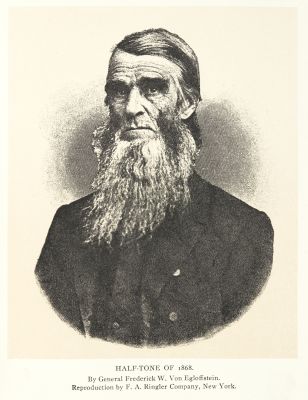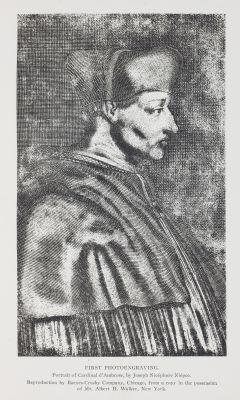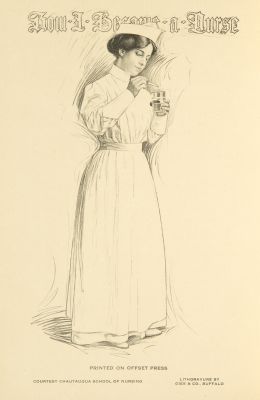
Title
Mr. Frederick IvesArtist
UnknownPublication
Horgan's Half-Tone and Photomechanical ProcessesDate
1913Process
Halftone (Ives)Atelier
Suffolk Engraving Co.Image Size
9.5 x 16.5 cm
Half-tone with two-hundred line screen.
In 1878 Ives invented utilizing a paper pattern for a halftone screen. Ives’ second 1881 patent, August 9, was for a complicated process, this time involving a plaster relief from a chromated gelatin. It was not until later that he switched to using a line screen as did the earlier halftone inventors. He also credited himself (1885) with making the first cross line screen by cementing two single line screens together with Canada Balsam. The ultimate perfection of the halftone negative was the placement of the screen a carefully controlled distance from the film in the copy camera. This slight separation created an optical dispersion of the screen’s image called the "Optical VÓ that resulted in a more perfect halftone plate. It can be seen because the dot size in the highlight is quite small and gets progressively larger in areas with progressively darker tones. This concept is generally recognized as Ives most important contribution to halftone theory. Ives was employed by the Crosscup and West Company in Philadelphia and his first published halftones were by them. Crosscup and West charged $1 per square inch in the first years. (Am. Photo Eng. pg. 146) ($25 in 2016 dollars – average daily US wage in 1890 was $1.50) Ives was also producing experimental three color halftones in 1885, claiming later that he developed the procedure of rotating the screens for the colors to avoid moire patterns. [1]
References
[1] Hanson, David Checklist of photomechanical processes and printing 1825-1910, 2017 p. 67


